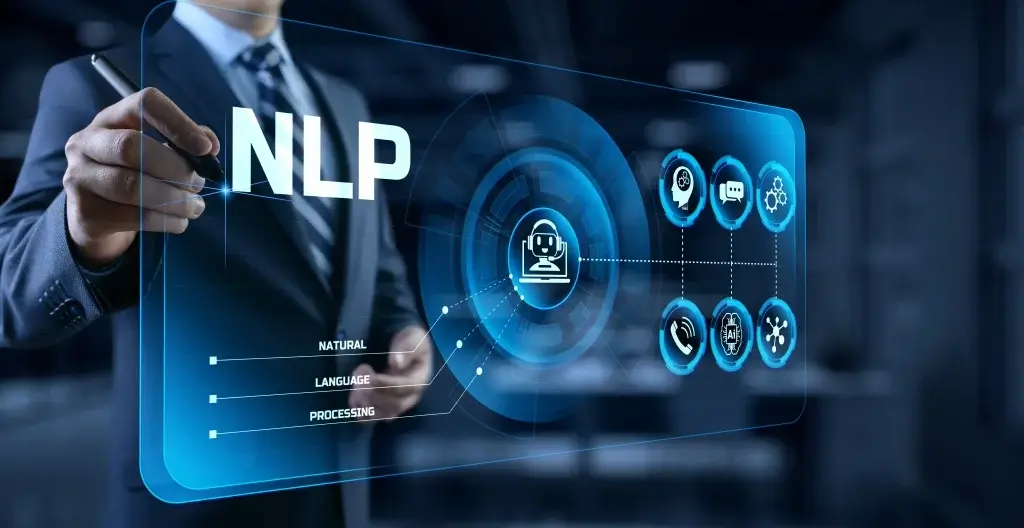Demystifying NLP: Exploring Lexical, Syntactic, and Semantic Processing for Powerful Natural Language Understanding
On the other hand, a low score is assigned to terms that are common across all documents. Stemming is a rule-based technique that just chops off the suffix of a word to get its root form, which is called the ‘stem’. For example, the words ‘driver’ and ‘racing’ will be converted to their root form by just chopping off the suffixes ‘er’ and ‘ing’. So, ‘driver’ will be converted to ‘driv’ and ‘racing’ will be converted to ‘rac’. Both of the cases give almost the same results without any major difference. The frequency approach is popular and NLTK also uses the frequency approach instead of the binary approach.
What is Natural Language Processing? An Introduction to NLP – TechTarget
What is Natural Language Processing? An Introduction to NLP.
Posted: Tue, 14 Dec 2021 22:28:35 GMT [source]
Gathering market intelligence becomes much easier with natural language processing, which can analyze online reviews, social media posts and web forums. Compiling this data can help marketing teams understand what consumers care about and how they perceive a business’ brand. Now, we have a brief idea of meaning representation that shows how to put together the building blocks of semantic systems. In other words, it shows how to put together entities, concepts, relations, and predicates to describe a situation.
Semantic Analysis Is Part of a Semantic System
And if NLP is unable to resolve an issue, it can connect a customer with the appropriate personnel. In the form of chatbots, natural language processing can take some of the weight off customer service teams, promptly responding to online queries and redirecting customers when needed. NLP can also analyze customer surveys and feedback, allowing teams to gather timely intel on how customers feel about a brand and steps they can take to improve customer sentiment. While NLP and other forms of AI aren’t perfect, natural language processing can bring objectivity to data analysis, providing more accurate and consistent results. Whether it is Siri, Alexa, or Google, they can all understand human language (mostly). Today we will be exploring how some of the latest developments in NLP (Natural Language Processing) can make it easier for us to process and analyze text.
Meet Semantic-SAM: A Universal Image Segmentation Model Which Segments And Recognizes Objects At Any Desired Granularity Based On User Input – MarkTechPost
Meet Semantic-SAM: A Universal Image Segmentation Model Which Segments And Recognizes Objects At Any Desired Granularity Based On User Input.
Posted: Sun, 16 Jul 2023 07:00:00 GMT [source]
Also, we understand that the words ‘succumb’ and ‘goal’ are used differently than in the sentences “He succumbed to head injuries and died on the spot” and “My life goals”. Let’s consider an example of smart speakers like Google Home where PoS tagging is used in real-time use cases. Now, the word ‘permit’ can potentially have two POS tags – a noun and a verb.
Demystifying NLP: Exploring Lexical, Syntactic, and Semantic Processing for Powerful Natural Language Understanding
NLTK tokenizer can handle contractions such as “can’t”, “hasn’t”, “wouldn’t”, and other contraction words and split these up although there is no space between them. On the other hand, it is smart enough to not split words such as “o’clock” which is not a contraction word. From each message, we extract each word by breaking each message into separate words or ‘tokens’. Let’s dive straight into it and start our discussion with lexical processing.
Semantics is a branch of linguistics, which aims to investigate the meaning of language. Semantics deals with the meaning of sentences and words as fundamentals in the world. The overall results of the study were that semantics is paramount in processing natural languages and aid in machine learning.
The term “君子 Jun Zi,” often translated as “gentleman” or “superior man,” serves as a typical example to further illustrate this point regarding the translation of core conceptual terms. Thus, the ability of a machine to overcome the ambiguity involved in identifying the meaning of a word based on its usage and context is called Word Sense Disambiguation. Given an ambiguous word and the context in which the word occurs, Lesk returns a Synset with the highest number of overlapping words between the context sentence and different definitions from each Synset. To learn more about different techniques that we can use to POS tag the words in the sentence, refer to the post, Demystifying Part-of-Speech (POS) Tagging Techniques for Accurate Language Analysis. When we create any machine learning model such as a spam detector, we will need to feed in features related to each message that the machine learning algorithm can take in and build the model.
Various supervised and unsupervised techniques are used for word sense disambiguation problems. WSD is the task of identifying the correct sense of an ambiguous word such as ‘bank’, ‘bark’, ‘pitch’ etc. For example, Consider a sentence “The batsman had to duck/bend in order to avoid a duck/bird that was flying too low, because of which, he was out for a duck/zero.” There are three levels Part-of-speech tagging, Constituency parsing, and Dependency parsing involved in analyzing the syntax of any sentence. The bag of words representation is very naive as it depends only on the frequency of the words.
Likewise, the word ‘rock’ may mean ‘a stone‘ or ‘a genre of music‘ – hence, the accurate meaning of the word is highly dependent upon its context and usage in the text. Living in Hyderabad and working as a research-based Data Scientist with a specialization to improve the major key performance business indicators in the area of sales, marketing, logistics, and plant productions. He is an innovative team leader with data wrangling out-of-the-box capabilities such as outlier treatment, data discovery, data transformation with a focus on yielding high-quality results. Instead of using supervised technique, an unsupervised algorithm like the Lesk algorithm is more widely used in industry. Let us look at the TF-IDF representation of the same text message example that we have seen earlier. In NLTK, there are various functions like word_tokenize, sent_tokenize, and regexp_tokenize to carry out the task of tokenization.
Sentiment analysis is widely applied to reviews, surveys, documents and much more. The letters directly above the single words show the parts of speech for each word (noun, verb and determiner). For example, “the thief” is a noun phrase, “robbed the apartment” is a verb phrase and when put together the two phrases form a sentence, which is marked one level higher.
What Are The Challenges in Semantic Analysis In NLP?
In this way, the Lesk algorithm will help find the best sense of the given word. Unlike we have seen above in the supervised approach, here words are not tagged with their senses. We cluster the words of similar senses into a single cluster in an unsupervised fashion and attempt to infer the senses. A popular unsupervised algorithm used for word sense disambiguation is the Lesk algorithm.
- This concept is known as taxonomy, and it can help NLP systems to understand the meaning of a sentence more accurately.
- Future trends will address biases, ensure transparency, and promote responsible AI in semantic analysis.
- For example, if we talk about the same word “Bank”, we can write the meaning ‘a financial institution’ or ‘a river bank’.
- For instance, “strong tea” implies a very strong cup of tea, while “weak tea” implies a very weak cup of tea.
During our study, this study observed that certain sentences from the original text of The Analects were absent in some English translations. To maintain consistency in the similarity calculations within the parallel corpus, this study used “None” to represent untranslated sections, ensuring that these omissions did not impact our computational analysis. The analysis encompassed a total of 136,171 English words and 890 lines across all five translations. It is a tagging problem where one needs to identify the sense in which the word is used.
Enhancing Comprehension of The Analects: Perspectives of Readers and Translators
In this blog post, we’ll take a closer look at NLP semantics, which is concerned with the meaning of words and how they interact. Collocations are an essential part of natural language processing because they provide clues to the meaning of a the relationship between words, algorithms can more accurately interpret the true meaning of the text. To summarize, natural language processing in combination with deep learning, is all about vectors that represent words, phrases, etc. and to some degree their meanings. By knowing the structure of sentences, we can start trying to understand the meaning of sentences.
Customized semantic analysis for specific domains, such as legal, healthcare, or finance, will become increasingly prevalent. Tailoring NLP models to understand the intricacies of specialized terminology and context is a growing trend. Cross-lingual semantic analysis will continue improving, enabling systems to translate and understand content in multiple languages seamlessly. Pre-trained language models, such as BERT (Bidirectional Encoder Representations from Transformers) and GPT (Generative Pre-trained Transformer), have revolutionized NLP. Future trends will likely develop even more sophisticated pre-trained models, further enhancing semantic analysis capabilities. Understanding these semantic analysis techniques is crucial for practitioners in NLP.
This study has covered various aspects including the Natural Language Processing (NLP), Latent Semantic Analysis (LSA), Explicit Semantic Analysis (ESA), and Sentiment Analysis (SA) in different sections of this study. However, LSA has been covered in detail with specific inputs from various sources. This study also highlights the future prospects of semantic analysis domain and finally the study is concluded with the result section where areas of improvement are highlighted and the recommendations are made for the future research. This study also highlights the weakness and the limitations of the study in the discussion (Sect. 4) and results (Sect. 5).

Read more about https://www.metadialog.com/ here.

